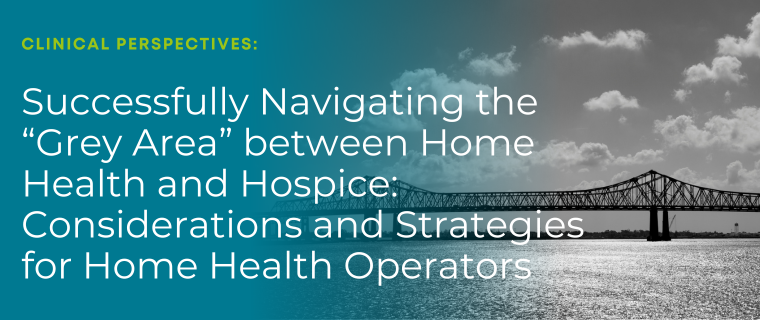Key Takeaways From J.P. Morgan's Healthcare Conference
We were fortunate to attendJ.P. Morgan’s annual healthcare conferencein early January. It’s one of the life science industry’s largest conferences of the year as it brings thousands of investors and executives from around the world to San Francisco where companies present their latest innovations hoping to find their next partner or investor.
MedCity Newscovered the event by summarizingthe top eight trends they saw there. We’ve added to their list below. You’ll notice both of our lists prioritize data, analytics and technologies that enable value-based care.
Here are the top trends we took away after attending JPM17:
- “If you don’t have data you can’t take risk.”A top Amedisys executive said this. He expounded upon the statementby explaining that with risk-based arrangements abound–like bundles, shared savings with payers and more–you can’t participateand expect to win unless you have vast data and a clear understanding ofthe trends that data holds.
- Healthcare needs more data driven insights that drive better outcomes at lower costs. In a value-based purchasing healthcare eco-system, outcomes matter most. It behooves providers and payers when those outcomes are achieved at the lowest cost. Technologies that can assist with this, like prescriptive analytics-based solution, will play a big role in healthcare’s advancement.
Here areMedCity News’stakeaways (We’re excited that many of the trends they spotted align with Medalogix’s value proposition):
- The big data trend is very strong and growing;
- Diagnostic companies are conducting earlier validation studies;
- Disruptive innovation is relying on model inversion;
- Second order companies are emerging;
- Corporate interest in startups is expanding;
- Strategic investors are trying several approaches to be more innovative;
- Seed funds want to invest in at least the same country; and
- Corporate venture capital investors are investing strategically and globally.
Driving better patient outcomes based on a true big data approachWith a very large, longitudinal volume of patient and outcome data, big data startups can leverage that information for proactive and predictive insights that will increase the quality of patient care, decrease mortality and morbidity, and lower overall costs. We are seeing this recurring big data theme across a wide range of specialties and we expect it to grow.
Some examples include radiation oncology, preventing prescription errors in hospitals, and telemedicine platforms looking to glean insights from millions of users.
Robust early validation studies for early stage diagnostic companiesIt’s now harder for a diagnostic startup to get funded as so many Theranos investors were burned and other investors are now more cautious when evaluating these businesses. But the best entrepreneurs realize that necessity is the mother of invention and the invention here is conducting earlier validation studies and publishing results as quickly as possible. The advantage of focusing on evidence-based validation prior to significant funding is that the diagnostic space is going to deliver companies with a stronger, more de-risked story sooner rather than later.
Inverting business modelsExamples include making telemedicine healthcare consults free for patients and generating revenue through other non-obvious mechanisms or new go-to-market strategies that zero capital costs and all revenue is made via a disposable or in some cases only off of the data generated or new software-based capabilities delivered via a SaaS model. I saw fewer of these, as they are extremely innovative but also harder than other startups — harder to imagine ideas like this, harder to de-risk, and harder to execute and get traction. But the effort required is rewarded with the advantage of bringing something truly novel and differentiated to the market.
The emergence of second order startupsThe entrepreneurs behind these companies are attacking problems created by the increasing proliferation of digital health and connected medical devices.For example, how does a hospital system keep networks secure with connections of so many highly specialized medical and Internet of Things devices? One startup quoted a statistic that there are now more than a dozen connected devices (including medical devices) per patient in a hospital that could be vulnerable to hosting malware while performing their life-saving tasks. Take a typical hospital with several hundred beds and most likely a small IT security team and you have a very difficult situation to deal with to keep that hospital secure. So with new problems come new startup opportunities.
Among large multinational corporates, there was strong and expanding interest in working with the right startups and many were looking for the most efficient way to cut through the noise and find the right companies. All of these large organizations are deluged with requests from startups, making it difficult for startups to break through. Larger corporates need to better understand how to triage opportunities, find better curation mechanisms for strategically interesting startups, and be able to explain clearly to startups how to fit within a global healthcare world.
At the same time, it seems nearly every large corporate healthcare company is struggling with how to be more innovative themselves and to do so efficiently. They realize they’ve lost a lot of their startup DNA and they’re concerned they can’t get new products launched in a reasonable and cost-effective timeframe. So, they are looking for highly focused and leveraged startup partnership opportunities that help solve these problems and generate new learning, partnership, revenue, and possible M&A opportunities.
A key theme across angel, seed, Series A, and corporate venture capital investors was that many startups they are seeing are not focused on truly large problems with high-impact solutions. With so many startups competing for funding, if you are not working on something with a large market, a huge vision, and an extremely compelling value proposition, it’s going to be nearly impossible to break through and get funded. Angel investors reiterated they largely want to invest in their own back yard (they want to be geographically close to the startup they are working with), while seed investors want to be at least in the same country.
Strategic corporate venture capital investors are operating on a global scale, blind to borders, and keenly interested in finding breakthrough companies regardless of location. Whether talking to a corporate venture capital investor from the Middle East looking at companies in the U.S. or a U.S. corporate venture capital investor looking at companies in the U.S., Europe or the Middle East, these strategic investors are not concerned with geography — they are prioritizing investments in companies that are strategically aligned and can be accretive in some fashion.
If you work in the healthcare industry, the J.P. Morgan Healthcare Conference is a must-attend event as it gathers people from across the industry and around the world making for one of the most productive weeks in terms of meeting with startups, large multinational healthcare companies, and early stage healthcare investors. I’ll be back next year and can’t wait to be in the thick of it talking to and meeting with the best companies to help deliver better healthcare to patients more quickly, at lower costs, and with better outcomes.
*See MedCity News’s original articlehere.
Related Blogs

HHVBP: A Winning Strategy for Home Health Providers
The start of 2025 has ushered in a wave of new realities for Home Health...

Pulse Referrals & Admissions: Real-world AI impact in a sea of hype
Throughout the tech space, including home health, much has been said rec...

Successfully Navigating the “Grey Area” between Home Health and Hospice: Considerations and Strategies for Home Health Operators
Amanda Fabozzi, PT, DPT Whether a patient should be served by hom...


